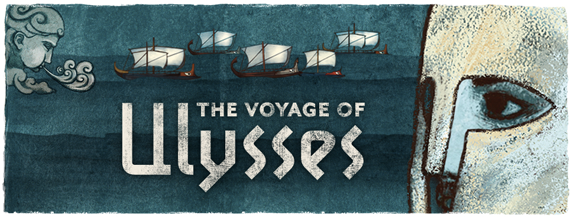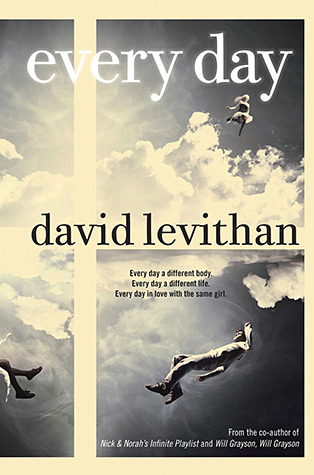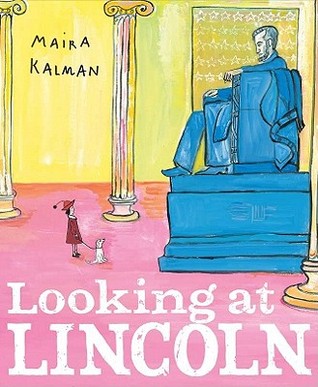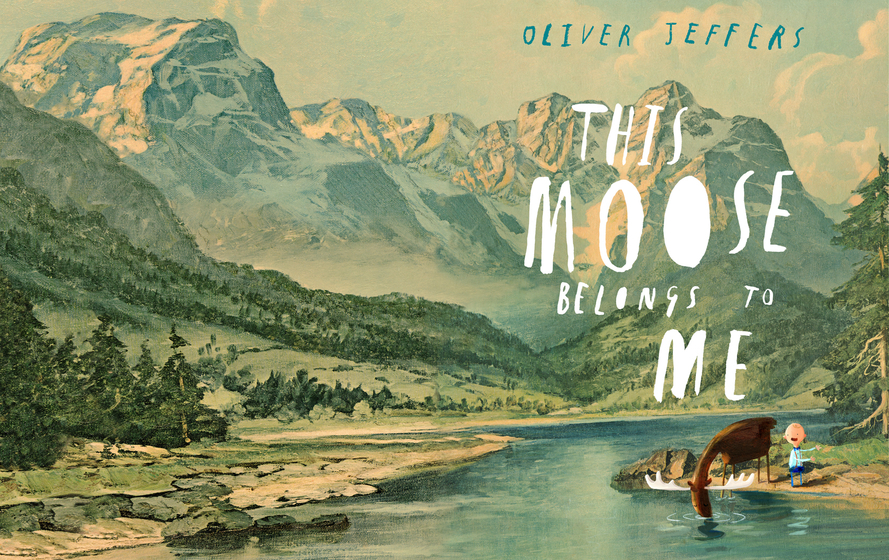
My Caldecott Hopefuls are picture books I like a lot, for various and idiosyncratic reasons, and not necessarily ones I think will win the award (although one can hope). Here's what I love about This Moose Belongs to Me by Oliver Jeffers (Philomel, 2012): the contrast between the grandeur and solemnity of the landscape backgrounds (many of them reprinted from paintings by 20th century American artist Alexander Dzigurski) and, well, Wilfred and his moose (as seen in the image above, which wraps around the covers of the book). Now that I think of it, this style of illustration--Jeffers's artistic borrowing--is especially appropriate to a story about ownership (see Caldecott criteria 1.c). Does this moose belong to me?
According to the copyright page, "the art for this book was made from a mishmash of oil painting onto old linotype and painted landscapes, and a bit of technical wizardry thrown into the mix here and there." In case you want to try this at home (yes, you do), Oliver Jeffers has helpfully made a video called How to Draw a Moose. We didn't have any landscape paintings lying around, so we drew our moose (meese? mice?) onto pages ripped from old National Geographics instead. Kind of like this:
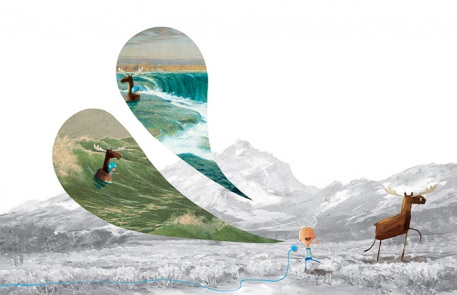
Except at Macchu Picchu.


